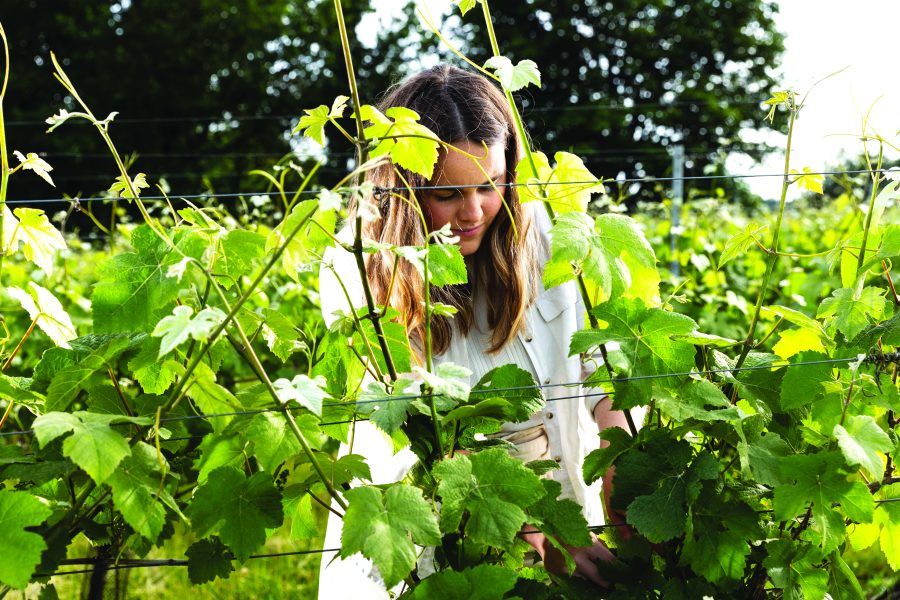As environmental expectations grow, fruit growers are being urged to understand and manage their carbon footprint. Whether supplying major retailers or running independent operations, measuring emissions and exploring carbon savings are key for long-term resilience.
While carbon accounting is often associated with livestock or large-scale arable farms, it’s just as crucial for fruit production. For mixed farms, the same principles apply across all sectors, including livestock, cropping and horticulture.
Counting carbon across the fruit farm: from orchards to tunnels
A carbon footprint in fruit farming refers to the total greenhouse gases (GHGs) emitted by the operation, including carbon dioxide (CO₂), methane (CH₄), and nitrous oxide (N₂O). Emissions come from:
- Fuel use: Tractors, sprayers, irrigation pumps, and generators
- Fertiliser and chemicals: Including nitrogen fertilisers and crop protection products
- Cold storage and packing: Energy consumption from refrigeration and processing
- Plastic use: Tunnels or mulching materials
- Transport and distribution: Especially for fast moving soft fruits.
These emissions are measured as carbon dioxide equivalents (CO₂e) to standardise comparison.
The opportunity in carbon credits: unlocking new revenue
Carbon credits represent verified reductions or removals of GHGs. Fruit growers can earn credits through various improvements:
- Switching to renewable energy: For cold storage, irrigation, or processing
- Improving soil health: Using organic amendments, cover crops or agroforestry
- Reducing fertiliser inputs: Through precision application
- Increasing tree and hedgerow planting: Enhancing carbon sequestration
- Adopting minimum or no-till systems.
These improvements must go beyond what’s normal for the farm, known as “additionality”, to qualify for carbon credits, which can then be sold on the carbon market.
Measuring emissions: the first step
To get started, a farm-level carbon audit is essential. Fruit producers need to collect data on:
- Fuel use: Litres of diesel per hectare
- Fertiliser and chemical applications
- Energy consumption: For cold storage and packing
- Land use: Breakdown of areas like grass margins and hedgerows
This data can be entered into agricultural carbon calculators available in the UK. Though designed for various farm types, these tools can be adapted to fruit farming. For mixed farms, it’s useful to break the data down by enterprise to get more accurate results.
Taking action: small changes, big results
Once emissions are calculated, identifying areas for improvement is next. In fruit production, energy use is a major contributor, especially for refrigeration and packing. Optimising these systems or switching to renewables can make a significant impact.
Improving soil health is another underused strategy. Practices like incorporating organic matter, reducing tillage and protecting soil cover not only reduce emissions but also boost productivity in the long run.
Those practising agroforestry or using wildflower strips should not overlook the carbon storing potential of these features. Properly documenting these areas can contribute to lowering the overall footprint.
Looking ahead: positioning for the future
Whether you’re a specialist fruit grower or part of a mixed enterprise, understanding your carbon position is vital for preparing for future regulations and accessing new opportunities. Retailers and processors are increasingly asking for carbon footprint data, and growers with clear, credible records will have a competitive edge.
Managing carbon doesn’t always require drastic changes. Small adjustments like smarter input use, improving energy efficiency and better data tracking can add up. Over time, these changes lead to savings, resilience and potentially new income streams through carbon markets.
By embracing carbon accounting today, fruit producers in the South East can lead the way in sustainable farming tomorrow.
For more like this, sign up for the FREE South East Farmer e-newsletter here and receive all the latest farming news, reviews and insight straight to your inbox.







